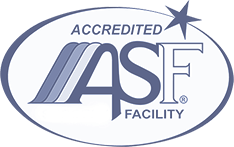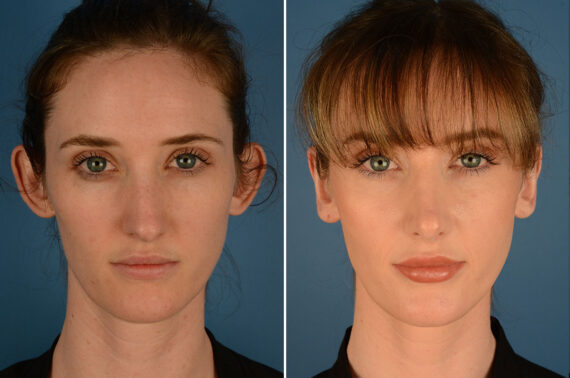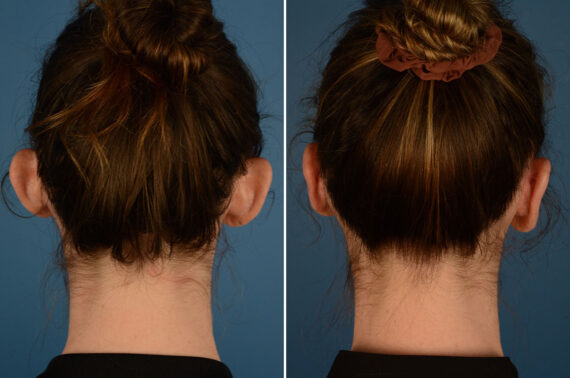Benefits and Beauty Through Otoplasty
Otoplasty, a transformative surgical procedure, addresses various ear-related concerns, including protrusion, size, and structural issues. This versatile surgery is designed to enhance both the aesthetics and function of the ears.
Our Achievements
Otoplasty
Otoplasty, also known as cosmetic ear surgery, is an outpatient procedure designed to improve the overall facial appearance of individuals with overly large or protruding ears. During the surgical plan, a board certified facial plastic surgeon or plastic surgeon will remove excess cartilage and reshape or reposition the ear structure to create a more natural look. Otoplasty can be used for a wide range of patients from children to adults — helping them feel more confident and improving their quality of life. The procedure typically takes one or two hours and requires minimal recovery time.
If you are considering otoplasty, it is important to find an experienced board-certified facial plastic surgeon or board-certified plastic surgeon who can provide you with detailed information about the procedure, including its risks and benefits. A good surgeon will explain the different techniques available to achieve your desired result while taking into consideration your ear structure and lifestyle. He or she should also take time to answer any questions you may have before proceeding with surgery.

Otoplasty Ideal Candidates
Otoplasty is an ideal procedure for those who wish to correct the size or shape of their ears. Patients of all ages can benefit from otoplasty, including both children and adults. Generally, ideal candidates should be in good physical and mental health with realistic expectations about the results of the surgery. Those considering otoplasty should also have flexible ear cartilage that is suitable for reshaping or repositioning.
Patients with protruding or overly large ears may benefit from otoplasty as it can create a more natural and pleasing look. Additionally, the procedure can help improve self-confidence in patients who feel embarrassed by their appearance due to malformed ears.
It’s important to remember that otoplasty cannot correct hearing problems associated with ear deformities, which require medical treatment instead of cosmetic surgery. Therefore, it’s essential that potential candidates looking to undergo otoplasty are honest with their surgeon about their expectations and discuss any underlying medical concerns prior to proceeding with the procedure.
Otoplasty Consultation
Before your procedure, your board-certified surgeon will want to conduct a consultation to ensure that otoplasty is the correct procedure for you or your child. They will start by asking about your medical history and any specific goals or expectations that you have for the procedure.
Your doctor will assess the placement, shape, and size of the ears. They may also take measurements and photos. The consultation is the perfect time to address any questions or concerns you might have about the procedure and results.
CALL TODAY TO SCHEDULE YOUR CONSULTATION
Types of Otoplasty
Depending on the unique size, shape, and position of your ears, your surgeon will choose one of two otoplasty approaches.
Ear Pinning
Is used to draw the ears closer to the head. If your ears stick out prominently from the side of your head, your surgeon may use ear pinning to draw them closer to your face. This is a surgical procedure that involves sutures to bend the ear cartilage and sometimes, cartilage excision techniques. Our surgeons most commonly use Mustarde sutures to re-create the antihelical fold and Furnas type of conchomastoid sutures to bring the bowl of the ear closer to the scalp.
Earlobe Reduction
Is beneficial for people with stretched, torn, or overly large earlobes. Small sections of the lobe will be removed and the surgeon will adjust the remaining pieces into a flattering shape.
Otoplasty Preparation
Since otoplasty is a plastic surgery procedure that may involve general anesthesia (which affects the cost of the surgery), your surgeon will recommend certain steps to prepare for your procedure. You will be asked to provide a list of your current medications to ensure that none of them will react poorly with the anesthesia or affect recovery.
Smoking, aspirin, and certain anti-inflammatory drugs and supplements should be avoided as they can increase your risk of bleeding. Your surgeon may also want to conduct lab testing or a medical evaluation to ensure that your procedure goes as smoothly as possible. If you have any preparation questions, feel free to contact your surgeon to ask!

Otoplasty Before & After Photos
* Each patient is unique and individual results may vary.
How is Otoplasty Done?
Depending on what is necessary (recreation of an antihelical fold, conchal setback, etc.), different surgical techniques will be used. This will be discussed during your consultation.
Typically, the procedure is performed through an incision hidden behind the ear or in the folds of the ear. Then, depending on your specific requests, your provider will manipulate the tissue of the ear. They may remove cartilage or skin, fold and shape the cartilage using stitches, or graft cartilage to the ear.
After the procedure is over, your surgeon will close up the incisions with stitches. The procedure typically takes between 1 to 3 hours. Adults and older children might receive intravenous anesthesia, but young children typically undergo otoplasty under general anesthesia.
Otoplasty Recovery
Otoplasty generally has a fairly straightforward recovery. Minimal discomfort is typical; your doctor will likely recommend a mild analgesic.
A head wrap dressing is placed at the end of the procedure. This is generally worn for one night. Keep the dressing warm and dry as your ears recover. Once the head wrap is removed, a headband is worn to support the ears in their new position. Our surgeons generally prefer you to wear a clean headband day and night for one week, then at night only for the following 2-3 weeks. The headband can be removed for showering starting 48 hours after the procedure. This will be discussed at your consultation.
As your ears recover, do not sleep on your ears or wear clothing that you have to pull over your head. Any sutures used to close the incisions behind your ears will either be removed after a couple of weeks or dissolve on their own over time.
The headwrap, band, and sutures are designed to hold your ears in place after the surgery. Follow your surgeon’s instructions to promote good results.
Why choose Aesthetic Surgery Center
Dr. Anurag Agarwal, M.D., F.A.C.S.
- Double board-certified facial plastic surgeon by the American Board of Facial Plastic and Reconstructive Surgery and the American Board of Otolaryngology – Head and Neck Surgery.
- Oral examiner and Board of Directors for the American Board of Facial Plastic and Reconstructive Surgery
- Former President of the Florida Society of Facial Plastic and Reconstructive Surgery
- Received his Doctor of Medicine at Philadelphia’s MCP-Hahnemann School of Medicine in 1999 and was elected to the Alpha Omega Alpha Honor Society.
- In 2016, Dr. Agarwal was honored at the annual American Academy of Facial Plastic and Reconstructive Surgery national meeting.
- Board-certified plastic surgeon by the American Board of Plastic Surgery.
- Attended medical school at UNMC (University of Nebraska Medical College).
- Was elected to the Alpha Omega Alpha Honor Society.
- Member of The Aesthetic Society, the Florida Medical Association, and Collier County Medical Society.
- General surgery residency at Loyola University Medical Center in Maywood, IL
- Plastic surgery residency at Cleveland Clinic Florida











